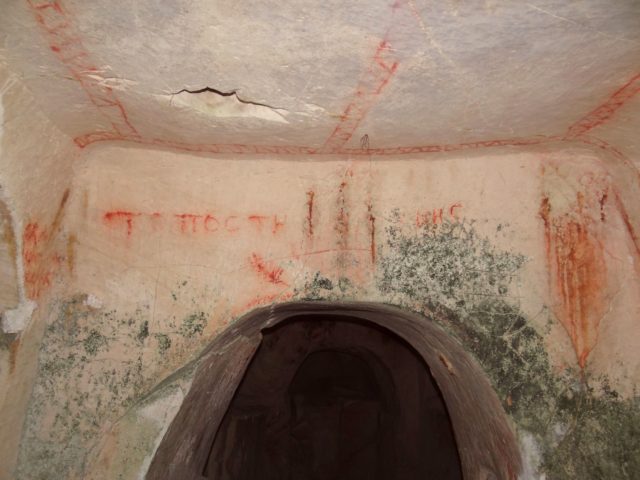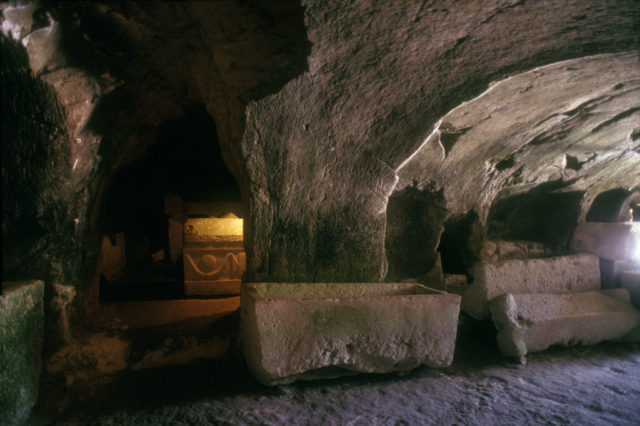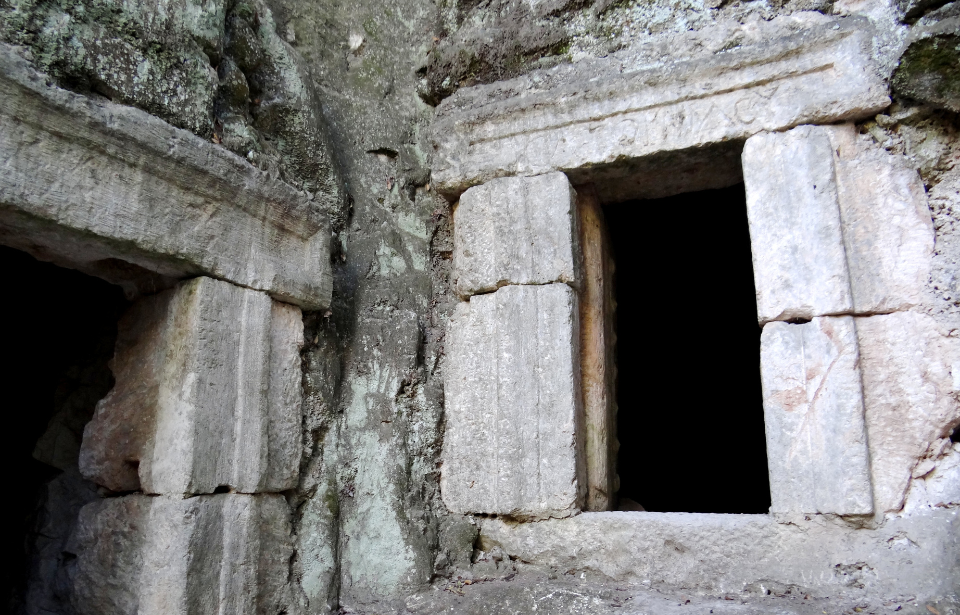Approximately 1,800 years ago, an ancient curse was recorded in red paint in a burial tomb near what is now Haifa, Israel. It was penned by Yaakov (Jacob) “the Proselyte,” an ancient Greek man who converted to Judaism. Yaakov was interred at Beit She’arim, an ancient Jewish town with a necropolis buried beneath its streets – but what does his curse promise to unleash?
A warning to grave robbers

The necropolis, located 62 miles northwest of Tel Aviv, includes a series of catacombs dating back to the 2nd-4th century AD. The burial sites of Beit She’arim detail its diverse history, with artwork and inscriptions by ancient Greek, Aramaic and Hebrew artists.
Yaakov “the Proselyte,” a term for someone who converted to Judaism, had the curse written in Greek, in red paint, on the wall near his tomb as a way to deter grave robbers. The warning reads, “Jacob the Proselyte vows to curse anybody who would open this grave, so nobody will open it. He was 60.”
1,800-year-old grave marker for ‘Jacob the Convert’ stumbled upon at Beit She’arim https://t.co/3VysKzPJ2E
— The Times of Israel (@TimesofIsrael) June 1, 2022
Researchers at the University of Tel Aviv believe family members likely wrote the final script of the curse, and that the find dates back to the Late Roman or Early Byzantine period (390-400 AD). They also suspect he was either Christian or a member of the cults of Mithra or Isis.
Surprisingly, Yaakov’s plea to grave robbers is just as pertinent today as it was at the time of his death. In 2012, the Times of Israel reported that members of the Israel Antiquities Authority had stumbled upon grave robbers searching for artifacts in the tunnels of Beit She’arim.
Beit She’arim is a UNESCO World Heritage Site

Today, Beit She’arim is protected as a UNESCO World Heritage Site. Since excavations of the necropolis began in the 1930s, archeologists have discovered well-preserved paintings and inscriptions in both Hebrew and Greek. The site was also home to a Jewish village, fitted with underground aqueducts, a synagogue, ritual baths and even an olive press.
More from us: Graffiti Unearthed at Hadrian’s Wall Reveals a Hilarious Ancient Insult
The site has preserved some of the last glimpses of ancient Jewish life in Israel, before Christianity became mainstream. Thousands of visitors flock to it each year to explore the stunning architecture and ominous messages from beyond the grave.
